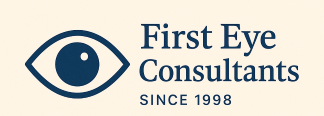Introduction
In resource-poor regions, the greatest shortage is not always equipment or drugs — it’s trained people. A single ophthalmologist cannot serve a population of millions. The solution lies in building a layered team of eye care workers, trained, equipped, and rooted in the communities they serve. In this post, we explore how to train, deploy, and retain eye health workers who bring sight-saving services to the places that need them most.
The Eye Health Workforce Pyramid
Successful systems rely on a tiered approach — each level reinforcing the next:
| Level | Role |
| Ophthalmologists | Perform surgeries and manage complex cases |
| Optometrists / Refractionists | Correct refractive errors and screen for disease |
| Ophthalmic Nurses / Clinical Officers | Diagnose and treat common eye conditions |
| Community Eye Workers / CHEWs | Identify cases, educate communities, refer patients |
Each has a defined scope, and training programs should reflect this diversity.
1. Train for Where They’ll Work
Eye health training must suit real-world constraints:
- Teach with simple tools (e.g. torch, direct ophthalmoscope)
- Emphasize clinical judgement over technology reliance
- Include outreach logistics (screening camps, mobile clinics)
- Train in task-sharing and working in teams
- Ensure trainees are from rural backgrounds — they’re more likely to return home
“Train in the bush, for the bush.”
2. Core Skills for Mid-Level Cadres
For ophthalmic nurses, CHEWs, and clinical officers, focus on:
- Visual acuity testing
- Recognition of cataract, pterygium, trachoma, glaucoma signs
- Lid eversion and torchlight exam
- Refractive error identification
- Basic first aid for trauma and red eyes
- Patient counseling and referral
- Record-keeping and follow-up tracking
Training should be hands-on, competency-based, and supervised.
3. Build Local Training Institutions
- Establish regional eye care training centers
- Partner with medical schools, mission hospitals, and NGOs
- Include refresher courses and continuing education
- Create clear career paths and professional recognition
This fosters retention, pride, and system resilience.
4. Use a “Train-the-Trainer” Cascade
One experienced worker can train 10 others. Build systems that:
- Identify skilled local mentors
- Give them teaching tools
- Deploy them as regional trainers
- Allow feedback loops and mentorship
The goal is local ownership, not dependency on outside experts.
5. Integrate with National Health Systems
- Include eye health workers in primary care teams
- Allow referrals to travel smoothly up the chain
- Equip PHCs to handle basic eye care
- Involve ministries in workforce planning and deployment
Training must align with government priorities, not just NGO projects.
A Lesson from the Field
In a district with no ophthalmologist, we trained four nurses and one community health extension worker. Within six months, they screened over 1,200 people, referred 300 cataract cases, treated conjunctivitis, and ran school vision days. With minimal equipment and proper training, they became the local eye team — trusted, effective, and permanent.
Training vs. Equipment — Both Are Needed
An eye unit may have a microscope, but no one trained to use it. Or, trained staff may lack lenses, charts, or a table. A balanced investment in:
- Human capacity
- Supplies
- Infrastructure
…is the only sustainable way to build eye care systems that last beyond donor cycles.
Conclusion: Sight-Saving Starts with Skilled Hands
Eye care doesn’t begin in the operating theatre — it begins when a community worker recognizes a cataract or a nurse comforts a frightened glaucoma patient. When we train people from within the communities they serve, we do more than provide care — we build a legacy of vision.
